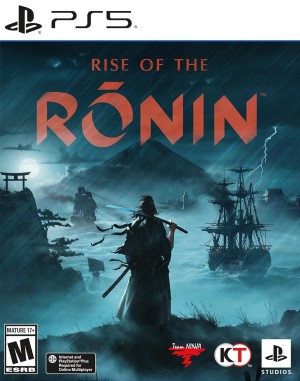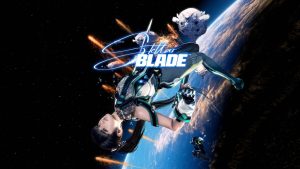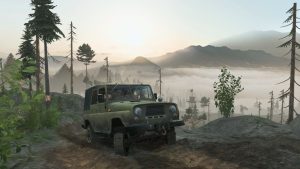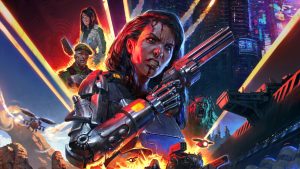
The gaming industry is literally at an all time high with insane amounts of anticipation as well as suspicion as to what the next generation consoles will bring about. With only a few days to go before Sony reveals the PlayStation 4 to the entire world, we thought it will be interesting to see where the two next generation consoles i.e. Orbis and Durango stand head to head.
In this analysis we take a deep look in to the rumored specifications of both the consoles and decide what it will eventually mean for game developers and most importantly, for the gamers themselves.
Let us first take a look at the rumored specs of Orbis and Durango.
Orbis Specifications
8 core CPU: 1.6 GHz AMD Jaguar
18 core GPU, design based on AMD’s Radeon HD 7000 Series
4GB of GDDR5 RAM
3.5 GB data to be available to games
50 GB Blu Ray Disc, X6 Speed
Durango Specifications
8 core CPU: 1.6 GHz AMD Jaguar
12 core GPU, design based on AMD’s Radeon HD 7000 Series
8GB of DDR3 RAM
6.5 GB data to be available to games
50 GB Blu Ray Disc, X6 Speed
CPU:
Both, the Orbis and Durango are rumored to run on an 8 core CPU at 1.6 Ghz. They will be grouped in to two clusters. In majority of the cases processor speed is all that matters. In extremely rare cases, the game’s performance will be dependent on the on-board cache. The Orbis is rumored to be shipping with a shared 512MB L2 cache and on the other hand the Durango will have 4MB L2 cache. Now on paper, Orbis seems to have the upper hand, but according to us cache memory does not matter since data is mostly processed by the CPU on the fly.
Floating Point Operations Per Second:
For this you need to understand the meaning behind FLOPS. Floating Point Operations Per Second basically means: “a method of encoding real numbers within the limits of finite precision available on computers.” Or in another words, the ease with which computers can calculate a large range of numbers quickly. So basically the more FLOPS your computer can perform, the more quickly it can process data.
Orbis is capable of doing 1.843 TeraFLOPS in the GPU department whereas the Durango can do 1.23. So all your game related operations like pixel drawing and other complex calculations will be faster on the Orbis. But since we are dealing with Tflops, people using both the Durango and Orbis will see next to no difference.
GPU and RAM:
The GPU of the Orbis is based on AMD’s “R10XX” (Southern Islands) architecture and has a DirectX 11.1 feature set. Most games will still be made on OpenGL, but the feature set is good to have which suggests that the Liverpool GPU is an enhanced version of the architecture. It also contains 18 Compute Units. The main clock runs at 800mhz and it is capable of 1.843 Tflops.
The Durango GPU, meanwhile, is said to be a slower than the Orbis with a total output of 1.23 Tflops. This isn’t a bad thing however, since we don’t have proper documentation for it. The GPU’s main memory runs at 800mhz, just like the one in the Orbis, and features 12 shader cores providing a total of 768 threads.
Orbis’ RAM is said to be GDDR5, which is a RAM with a higher bandwidth speed, and also quite expensive. It’s a miracle Sony have gone with such an exotic configuration as they feel they didn’t do enough justice to the PS3, where many developers complained about the less amount of RAM. The system has given 500MB to the OS, which leaves us with a decent amount of memory, which can last an entire generation without causing bottlenecks.
The Durango is said to have 8GB DDR3 RAM, which you can normally find in desktop PCs, however, the thing with Durango is that it also has a 32MB eSRAM to complement it. The eSRAM provides very high bandwidth and also takes a lot of space on the die, but it sort of nullifies the slower DDR3 memory the system has.
However, considering the Orbis has a non-split memory structure and a RAM that will not need a lot of optimization from developers, we could see games running better on the system until developers can learn how to take advantage of the Durango RAM structure properly.
We can say that both the systems have an advantage and can result in great games if they are developed with each system’s strengths in mind.
Applications:
Microsoft are clearly going to provide a more application based product with the Durango. Out of the 8GB they are allocating 1.5 GB to the OS. So one can expect more social applications on the Durango during it’s life time, something which we have already seen on the Xbox 360. Expect a lot of Kinect 2 support too.
Sony on the other hand will be allocating 0.5 GB to the OS, which should run a decent number of applications. I am sure Gaikai will be one of the applications that will be shipped along with the PS4.
What It Means For The Game Developers And Gamers:
On paper, the Orbis clearly has a better hardware with a better graphic card and a powerful RAM. But will developers use them to the fullest? That remains to be seen. Judging by the current generation and the advent of multiplatform games, very few developers will be using the full resources of the Orbis.
With development costs going high and next gen consoles following a PC like development module, expect the current trend to continue on the Orbis with better first party and multiplatform games that will perform similar to the Durango.
One thing’s for sure, Orbis unlike the PlayStation 3 should not be getting any flak from the developers regarding it’s architecture.
Both the Orbis and Durango will have something unique to offer. The Durango will be offering a totally new set of social media features, coupled with Kinect functionality. Whereas, Sony will pushing cloud based gaming with Gaikai.
Conclusion:
Sony are indeed putting their best foot forward. But does a powerful hardware mean better games?
Games is where it all matters. Right now there are more questions that answers. Hopefully we will get them answered in the coming days and weeks.
Stay tuned for more news and updates.
















Share Your Thoughts Below (Always follow our comments policy!)